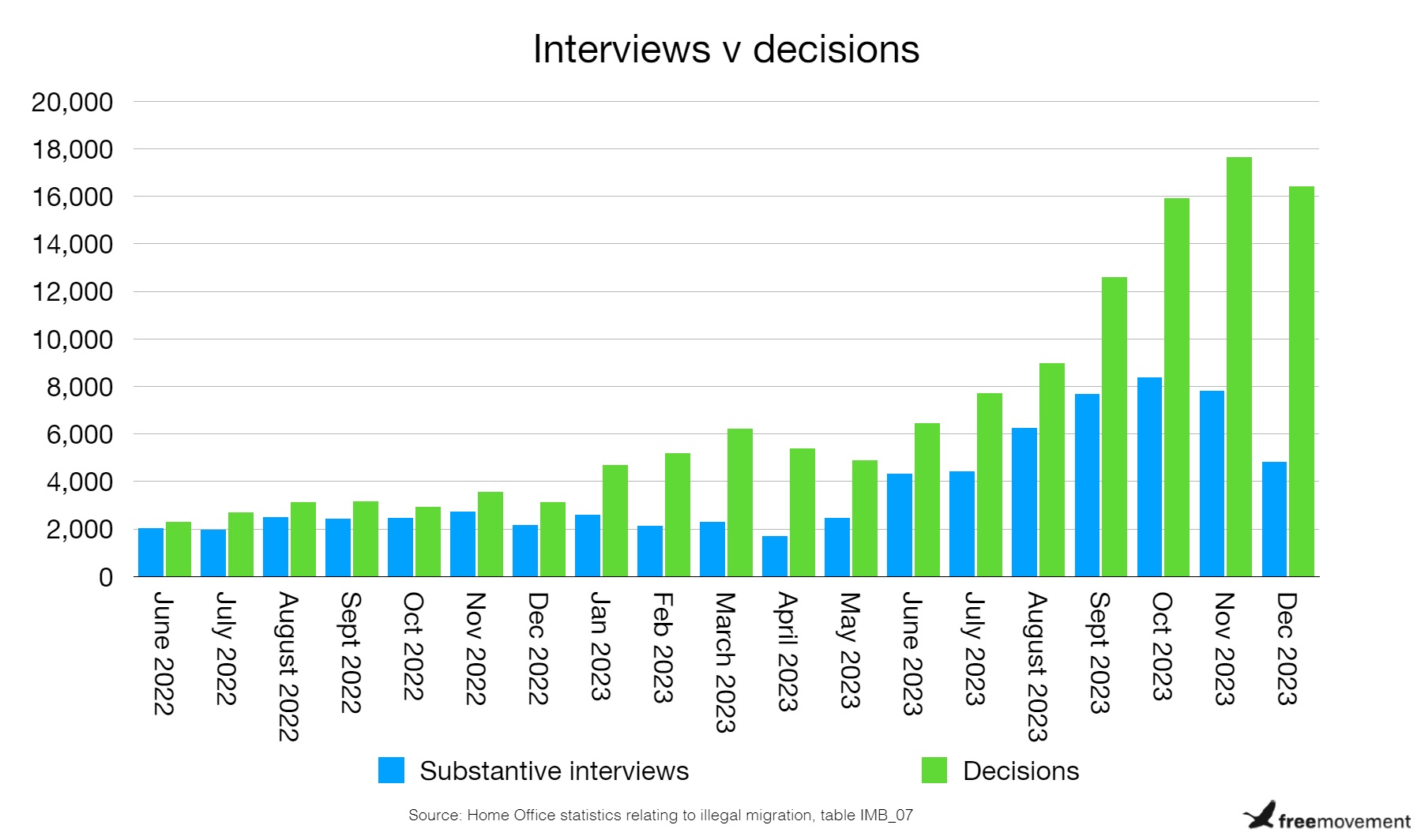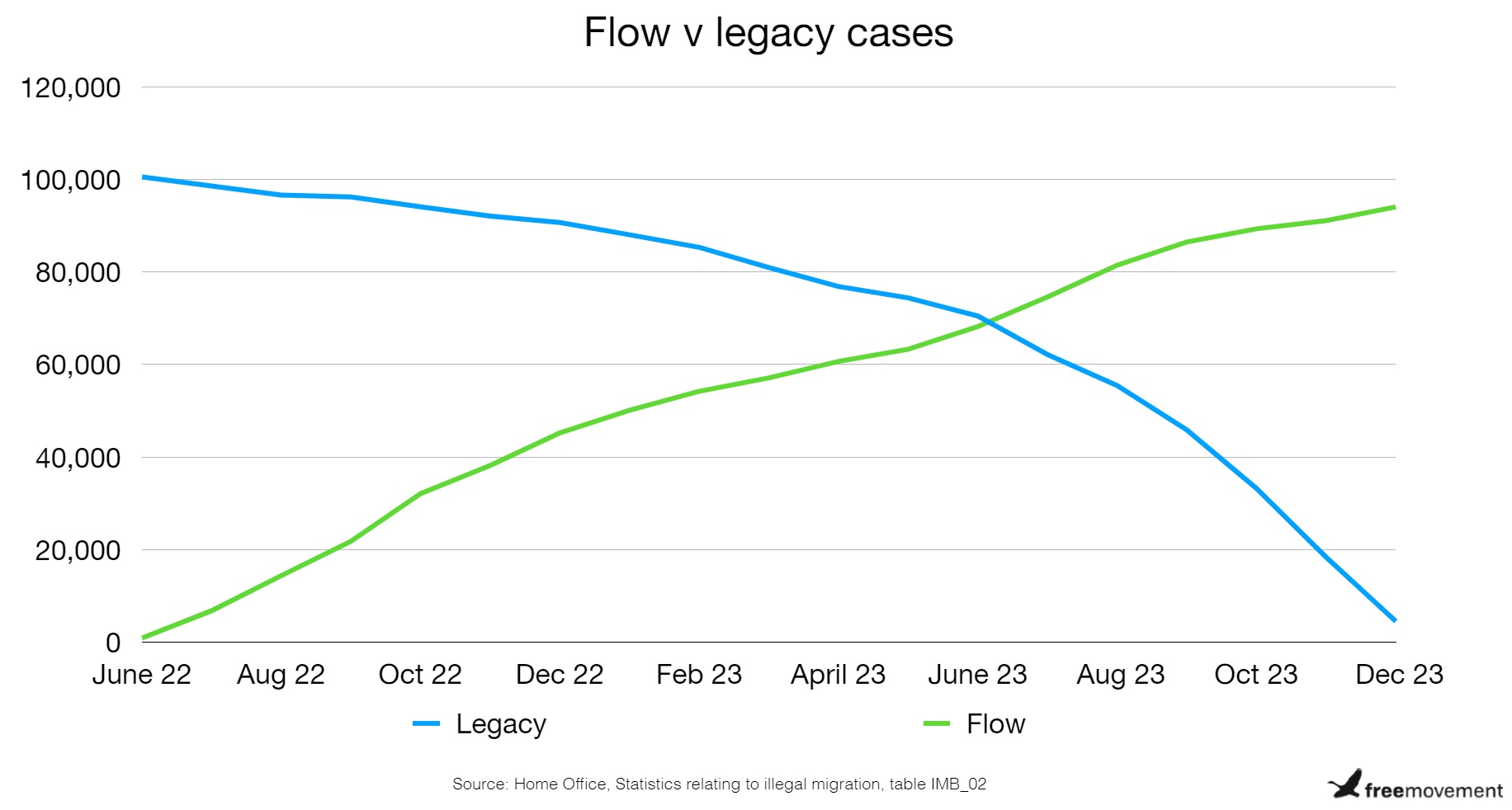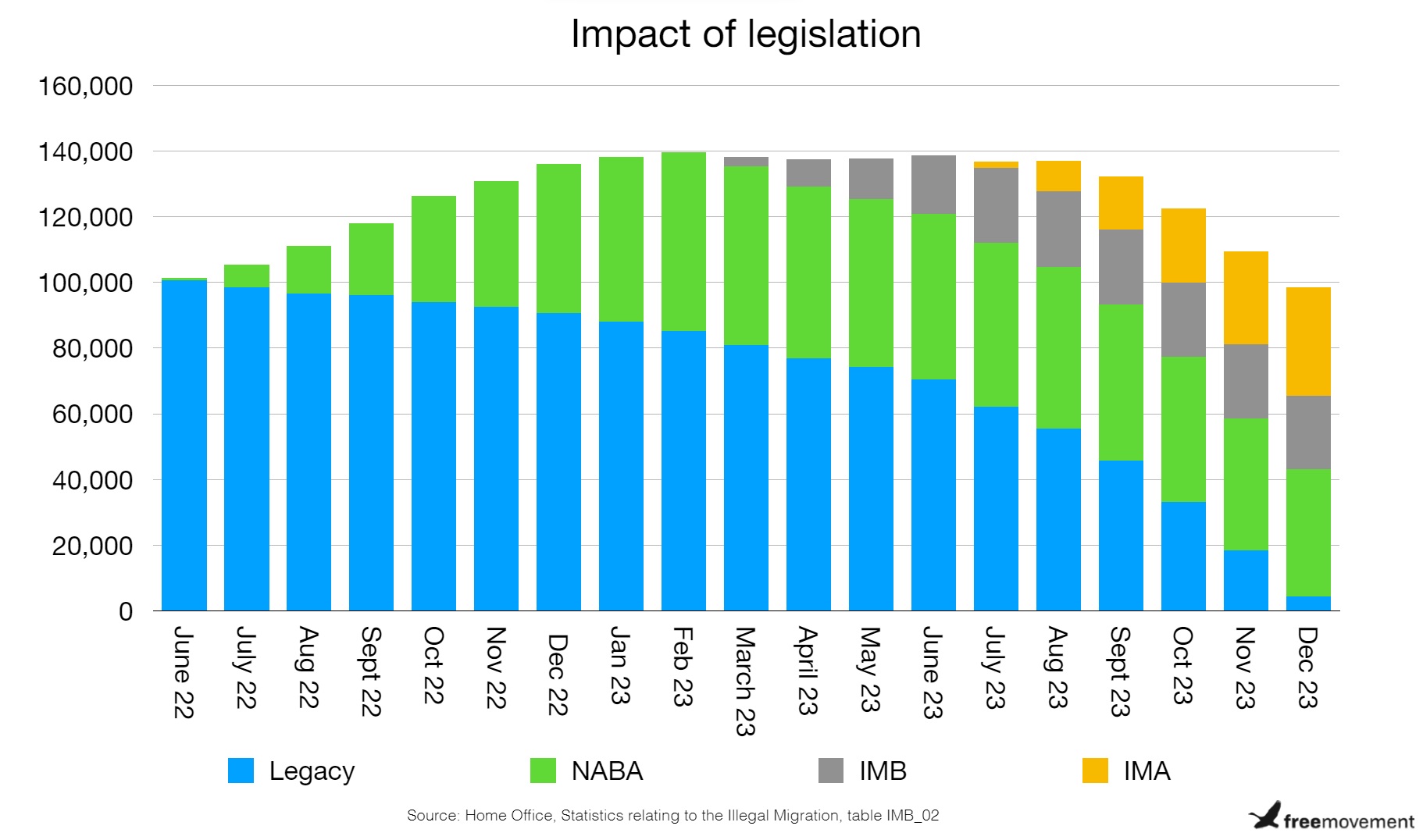- BY Sonia Lenegan

Reduction in asylum backlog achieved mainly through withdrawals and questionnaires
THANKS FOR READING
Older content is locked

A great deal of time and effort goes into producing the information on Free Movement, become a member of Free Movement to get unlimited access to all articles, and much, much more
TAKE FREE MOVEMENT FURTHER
By becoming a member of Free Movement, you not only support the hard-work that goes into maintaining the website, but get access to premium features;
- Single login for personal use
- FREE downloads of Free Movement ebooks
- Access to all Free Movement blog content
- Access to all our online training materials
- Access to our busy forums
- Downloadable CPD certificates
In December 2022 the Prime Minister pledged to clear the ‘legacy’ backlog (claims made before 28 June 2022 when certain provisions of the Nationality and Borders Act 2022 were brought into force) by the end of 2023. Yesterday he claimed that this goal had been achieved, despite the government’s statistics showing that there were still 4,537 of those cases outstanding at 28 December 2023.
Separate to the usual quarterly statistics release by the Home Office, monthly ‘ad hoc’ statistics loosely related to the Illegal Migration Act have been published since March last year. These have mainly focussed on small boat arrivals and the backlog clearance and were updated yesterday, to support the Prime Minister’s assertion. Those figures show that the overall backlog is smaller than it was a year ago as there were 135,959 applications pending at 31 December 2022 and this was 98,599 at 28 December 2023.
More decisions being made without a substantive interview
Although poorly implemented, the decision to decide asylum claims by people from high grant countries without the need for an interview was a sensible one and seems to have played a large role in the progress that was made in reducing the size of the backlog.

It is difficult to assess the precise impact of the use of the questionnaires on the backlog as some of the decisions made during each reported time period will relate to an interview that took place at an earlier date. However, the data shows a huge increase in decisions (total 112,138) without a corresponding increase in interviews (total 54,937) and so the impact certainly seems significant.
More staff
In December 2022 there was the equivalent of 1,237 full time staff working on asylum casework. At 24 December 2023 there were almost double that, at 2,405. This must have had some impact, although given the reduction in backlog was mainly driven by withdrawals and questionnaires, which require much less caseworking, the extent of this is unclear.
More withdrawals
The statistics summary states that of “the 112,138 initial asylum decisions made between January and 28 December 2023, 35,119 were non-substantive decisions”. This includes withdrawals, and it seems reasonable to conclude that the vast majority of those 35,119 decisions were withdrawals given that the statistics to the end of September 2023 (table Asy_10a) showed that 18,709 applications had been withdrawn since June 2022, most of these in 2023. It has been clear since last year that the government was using this as a tool to artificially reduce the number of cases.
This means that over 31% of ‘decisions’ that were made in 2023 were probably withdrawals. As we have pointed out repeatedly over the last year, these are people who are still here and a large proportion of them are likely to be refugees. All that has been achieved by removing them from the asylum system is an increase in the likelihood of them being subject to exploitation, as people who are left outside the system are far more vulnerable to this.
Neglecting ‘flow’ cases
At 30 November 2022, just before the Prime Minister made his commitment to clear the backlog of legacy cases, their number stood at 92,601. While that number has been dramatically reduced, the backlog of legacy cases has effectively just been replaced with ‘flow’ cases, which are those applications made on or after 28 June 2022. At 28 December 2023 the number of pending flow cases was 94,062.

Some of these cases will be recent, as we will see below, however many are likely to have been waiting for over 18 months.
Impact of new legislation
“That is precisely what this Bill will do. That is how we will stop the boats” – Suella Braverman said when introducing the Illegal Migration Bill in the House of Commons on 7 March 2023. Since then, according the government’s latest statistics, over 25,644 people have crossed the Channel in small boats (up until 27 December 2023 – table IMB_01a).
The statistics also provide the number of applications pending by date, from when new legislation was introduced or received Royal Assent. So applications made on or after 28 June 2023 and before 7 March 2023 are counted as ‘Nationality and Borders Act’ cases. Then applications made on or after 7 March 2023 and before 21 July 2023 are counted as ‘Illegal Migration Bill’ cases. Applications made on or after 21 July 2023 are counted as ‘Illegal Migration Act’ cases.
The government has previously argued that the legislation would act as a deterrent (as they have also argued is the case with the Rwanda agreement, despite that also not being operational). This is why the Illegal Migration Bill, when introduced, was to apply the duty to remove to anyone who arrived on or after 7 March (clause 2(3)) despite not being in force. This was later amended to the date of Royal Assent, i.e. 20 July 2023, although it is still not in force.
As things currently stand, this means that anyone who has arrived on or after 20 July and who meets the other conditions for the duty to remove is at risk of being denied asylum, regardless of the merits of their case. This does not appear to have acted as a deterrent, as we can see the number of people who have arrived since 20 July 2023 continues to increase and was at 33,085 applications at 28 December 2023.

If the duty to remove is brought into force by the government without using the powers to amend the 20 July date, that will mean that there are tens of thousands of people who are already in the UK and suddenly excluded from the asylum system. If the government does propose to do this, then they must explain what they expect to happen to this group, as there is certainly nowhere else to send most of them.
Conclusion
The heavy use of withdrawals to reduce the number of pending applications does make it look as though the backlog clearance was an exercise in number management more than anything else. The increase in grants to people without the need for a substantive interview is a positive change (albeit that the processes could continue to be refined and improved). In the meantime, the need for the government to explain what it intends to do with those who have arrived since 20 July 2023 becomes increasingly pressing.
SHARE

